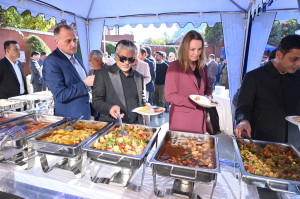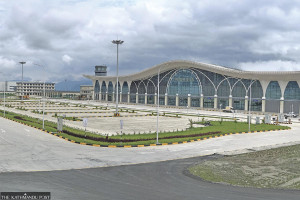Culture & Lifestyle
Mapping Nepal’s stories through technology
Tales once whispered by locals now speak through smartphones. Saarang’s QR-tagged boards allow travellers to do that.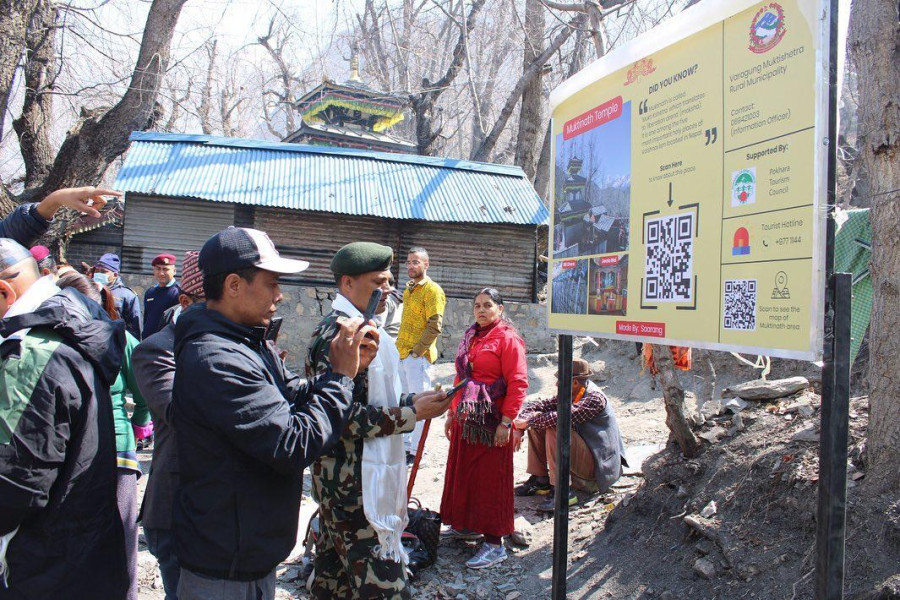
Aarya Chand
The golden QR-coded boards near temples, shrines, and monuments might seem like another digital installation. But a smartphone scan opens not a payment gateway but a story—a voice narrating centuries of local history, myths, and traditions.
This innovation belongs to Saarang, a travel-tech company founded by Sachin Dangi and Diwakar Rizal. Saarang is reshaping how locals and foreigners experience Nepal’s cultural and historical landscape. Its name, derived from saarangi—the traditional Nepali string instrument once used by travelling musicians to tell stories through song—reflects its mission: to continue the country’s storytelling tradition in a modern form in multiple languages.
What began as an experiment now spans over 250 locations across Nepal—from Budanilkantha to Mustang—bridging centuries-old tales with digital accessibility.
“We call ourselves a travel tech company,” says Dangi. “We build tech products for the travel industry. In a way, we’re trying to create micro economic zones in the country.”
Saarang’s origins trace back to a trip during the Covid-19 lockdown. Dangi recalls travelling with a friend to Chisapani Gadhi, a historical fort near Hetauda. “We reached there after three or four hours, but they were closing the gates,” he says. “A priest had the keys, and when he let us in, he began narrating stories of the Anglo-Nepal War—the soldiers, the cannons, how the battle unfolded. It was so vivid we could almost imagine it.”
At the end of the tour, the priest led them to the Kaal Bhairav temple, where he mentioned that women were not allowed to enter. Inside, Dangi and his friend noticed two paintings of women on the wall and asked why they were there, if women were not allowed. “He told us those were the women who had once entered the temple and died vomiting blood,” Dangi recalls.
That encounter lingered. “The stories were locked inside those doors,” he says. “Even if foreigners managed to get in, they’d need to know Nepali, and the priest would need to speak English. What if they were Korean or Japanese? There’d be no conversation at all.”
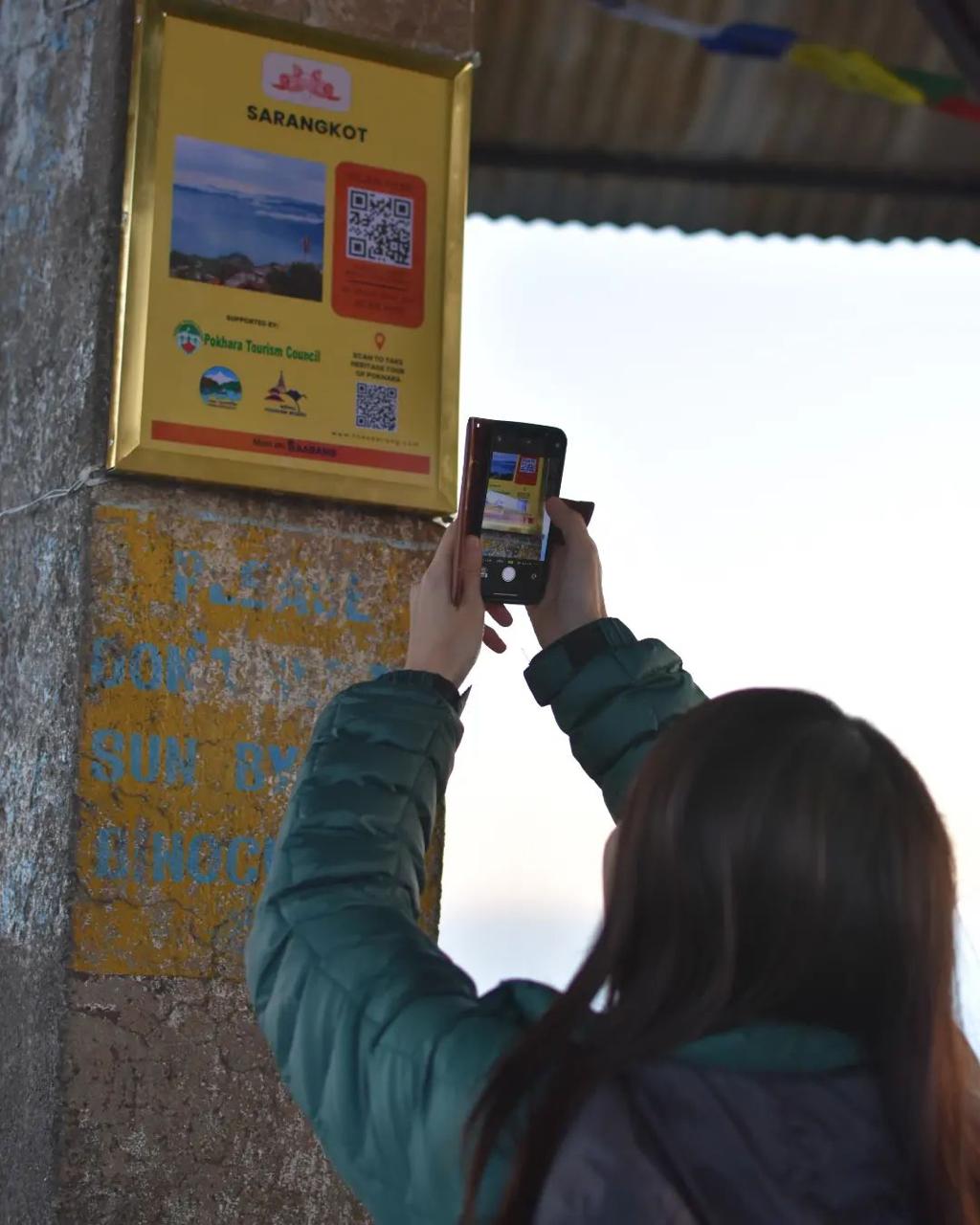
When Dangi returned to Kathmandu, he realised the same issue existed in Patan Durbar Square. ‘‘There were so many temples, but no one to ask about them. You might want to Google it, but you don’t even know the name of the shrine,’’ he says. The realisation marked the beginning of Saarang.
Dangi and Rizal started exploring ways to make local storytelling accessible. “We thought about pamphlets, hoarding boards, and guide centres,” he says, “but they all had limits—operating hours, physical space, language barriers. Then we thought about QR codes. They exist 24 hours, take little space, and can redirect to any amount of content.”
Their first pilot site was Budanilkantha. “We documented where the boards were, how the rituals worked, but nothing explained the idol’s story,” Dangi says. After drafting and recording narratives, they presented their work to the mayor of Budanilkantha, who permitted two QR installations. “That was our first sale.”
The project grew organically. “People already knew how to scan QR codes because of digital payments,’’ he says. ‘‘We just had to change the narrative—from paying money to gaining information.” Saarang expanded to Thamel, Lumbini, Pokhara and Mustang. Each site required ground-level collaboration. “We meet municipal workers, temple committees, and locals,” Dangi explains. “After compiling the stories, we take approval from everyone involved before finalising content.”
Saarang’s small team remains focused. Dangi oversees technology, while Rizal leads research and story compilation. Depending on where the boards are installed, they also rely on local contributors who record narratives in regional languages—Newa, Maithili, Limbu, and Magar. “In Kathmandu, all boards include the Newa language. It’s always place-specific,” Dangi says.
For foreign languages, they use Amazon Polly, a text-to-speech system that provides lifelike audio. “It gives about 90 percent accuracy,” he says. “We choose the languages according to tourist flow. In Lumbini, we had demand for Korean and Japanese; in Pokhara, for German and Italian.”
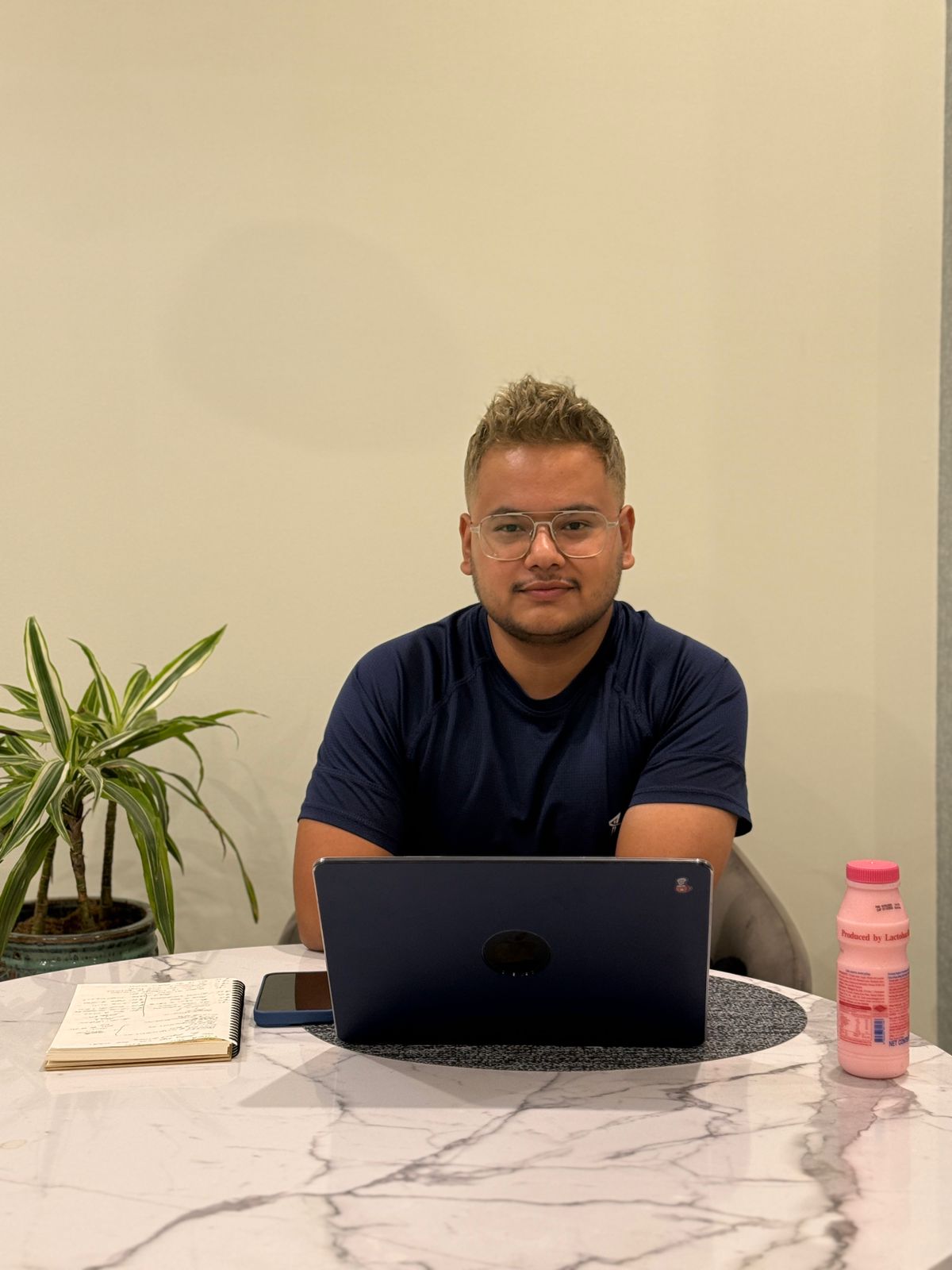
Dangi’s educational background reflects Saarang’s interdisciplinary nature. Born in Dang, he moved to Kathmandu as a child and later pursued A-Levels in Computer Science, Mathematics, and Psychology. “That explains the mix of tech, logic, and human stories,” he says. His interest in economics emerged during a gap year spent travelling. “I realised that to make Nepal better, economics is the way to go, not physics. Saarang integrates all three—travel, tech, and economics.”
Turning Saarang into a registered enterprise was not easy. “We needed office space to register, which meant rent and a 15 percent tax, all upfront,” Dangi says. “As students, that didn’t make sense.” The process was “complicated and outdated,” requiring lawyers to handle basic registration. “In the US, registering a Limited Liability Company (LLC) takes five minutes online. In Nepal, it took us days just to understand the paperwork.”
Working with local governments added another layer. “Because we collaborated with temple trusts and municipalities, we needed VAT registration. Filing VAT, managing tenders—it was all new to us,” he explains. The team lost several sales due to lengthy procedures and frozen budgets. “The learning curve is too big for young entrepreneurs,” Dangi notes.
Saarang’s expansion followed a clear roadmap. “We started with Kathmandu, then moved to Pokhara and Lumbini—the major tourism centres,” Dangi says. Then the team began connecting routes between them, installing boards in Bandipur, Manakamana, and Mustang. “We’ve also built a mapping system,” he adds, “so when you scan one place, it suggests nearby destinations.”
In Lumbini, Saarang’s boards at the Maya Devi Temple include information about Kudan, a nearby site where Buddha is said to have reunited with his father. “After we added Kudan to the content, we saw an increase in visits through scan data,” Dangi says. “That showed us storytelling could influence movement.”
Among the sites Saarang has documented, Thini village in Mustang stands out. “It was the first time we covered an entire trail,” Dangi says. “The stories there—how the yak dance began, how the Mukhiya is chosen, how apple farming started—are all connected. We could circle the route with stories along the way.
The company is now developing an AI-powered travel app, expected to launch later this year. “We’re feeding it with localised data—food, experiences, routes,” Dangi explains. “It will create customised itineraries using that data. For places like Thini, where people might not know how to attract tourists, our data can help generate plans automatically.”
He sees this as part of a broader goal: integrating Nepal into the global tourism-tech map. “Tourism has remained the same for 20–30 years,” he says. “It’s time to innovate with technology.”
In August, Saarang organised ‘Nomads Basecamp’ in Pokhara—a gathering aimed at positioning Nepal as a digital nomad destination. “We brought people from across the world,” Dangi says. “Some rode bikes to Mustang, some went paragliding, some trekked. We collected data from them about what Nepal needs to develop as a nomad hub.”
Reflecting on his journey, Dangi remains pragmatic. “Technology is not the product—it’s just the tool,” he says. “Before, I thought a website or app was the final product. But now I see that these are just tools for solving problems. The end product is the experience, not the tech.”
He believes young entrepreneurs in Nepal need early exposure to professional systems. He suggests, “Starting internships early to understand formal work processes and when building ideas, to think of the first five countries, not just the first five customers—aimingg beyond local boundaries.”




 16.12°C Kathmandu
16.12°C Kathmandu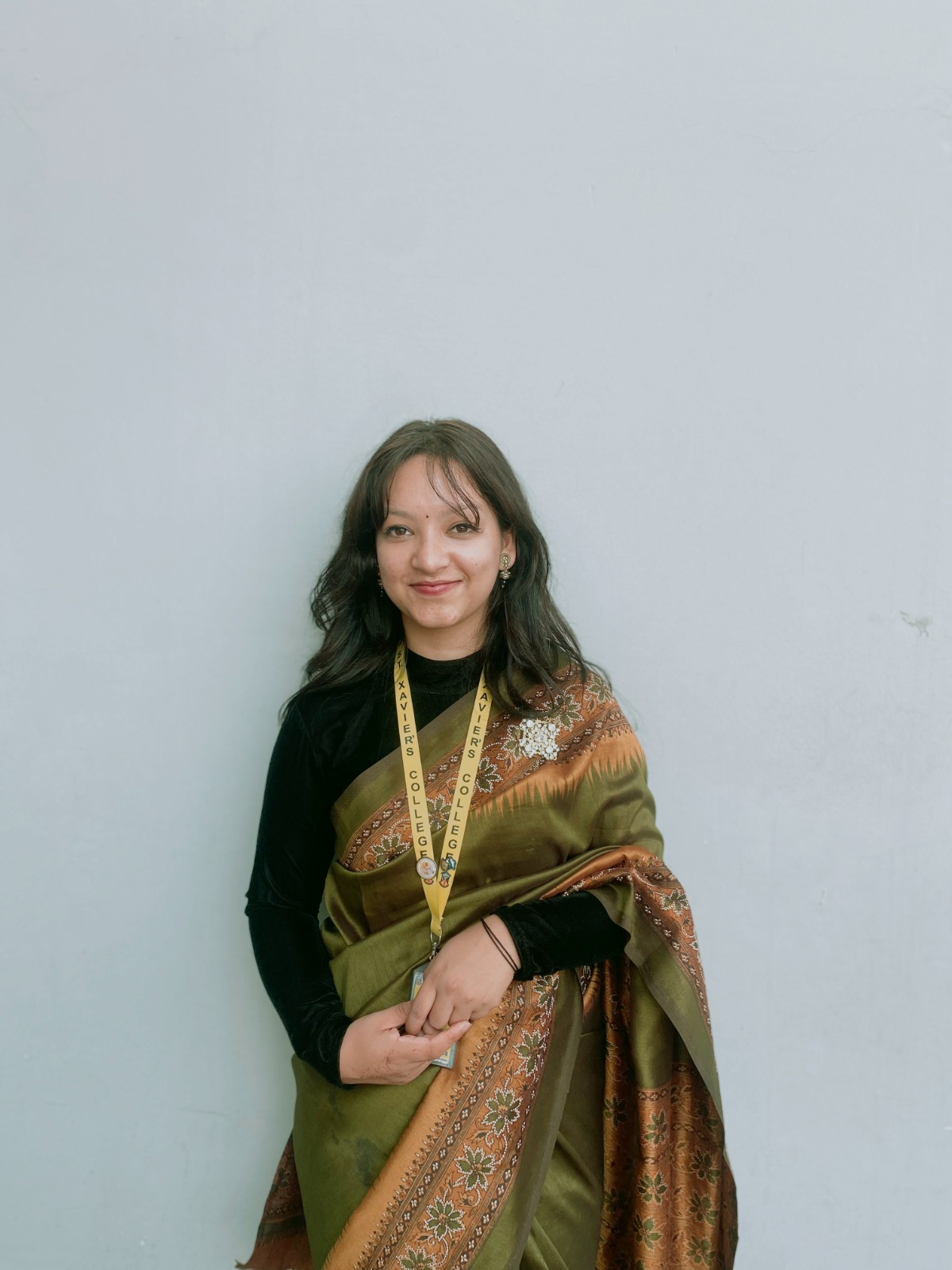



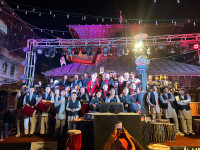
%20(1).jpg&w=200&height=120)



